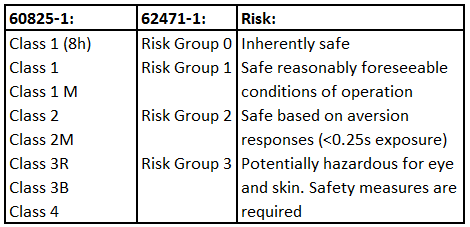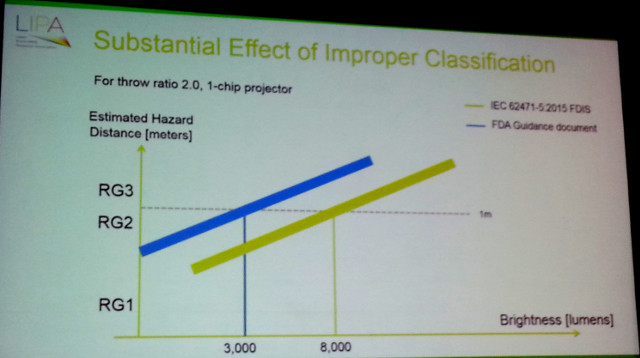The Laser Illuminated Projector Association (LIPA) was represented by Greg Niven at SID, where he provided an update on regulatory action regarding laser-based displays. While the organization has had success in Europe (IEC) and Japan on regulations regarding laser and laser-phosphor projectors, it has not been as successful in the US. That is putting the sale of laser-phosphor projectors in jeopardy.
Niven explained that the organization’s efforts have been focused on convincing regulatory agencies that a laser projector – whether powered by RGB lasers or a laser-phosphor engine – should be treated like lamp-based projectors, not laser light show devices or laser welding solutions. That may seem obvious, but it has taken tremendous effort and research to prove this.
The basis of the argument is that an RGB or laser phosphor projector expands the beam of light to fill a microdisplay and it is not a tight, collimated beam exiting the projector. Eye damage is based on power density, so small beams with high power are dangerous, but the same power over a big beam may not be harmful. That is the case for projectors and so laser-based projectors should be treated just like their lamp-based cousins.
A solid research project proved this and was accepted in Japan and Europe, but US regulators, the FDA, didn’t quite see it that way. In its ruling earlier in the year, it did not use the language that other agencies and LIPA provided and it referenced out of date EU regulations (the new one was approved but not issued). As a result, RGB and LP projectors are still considered laser devices and must obtain a variance for use in commercial application. That may be fine for a theater where an RGB laser will reside, but that also means a laser phosphor projector in a meeting room, symposium, or digital signage venue needs a variance from the FDA. That means limited access areas and maybe a laser safety officer.
Such restrictions are a non starter for these markets and will have to be ignored by manufacturers and installers – if they want to sell and install any LP projectors.
LIPA also developed a new way of characterizing these projectors: Risk Groups. This has now been extended to projectors with interchangeable lenses as well.

Under the IEC guideline, projectors with an output of 8,000 lumens and above are considered Risk Group 3, while the FDA guidelines set that limit at 3,000 lumens. That’s the difference between a specialized segment and the mainstream market. What would you do?

Editor’s Comment
The LIPA has written to us about this issue and we have published its response. LIPA Clarifies Its View on FDA/Laser Phosphor Issue

